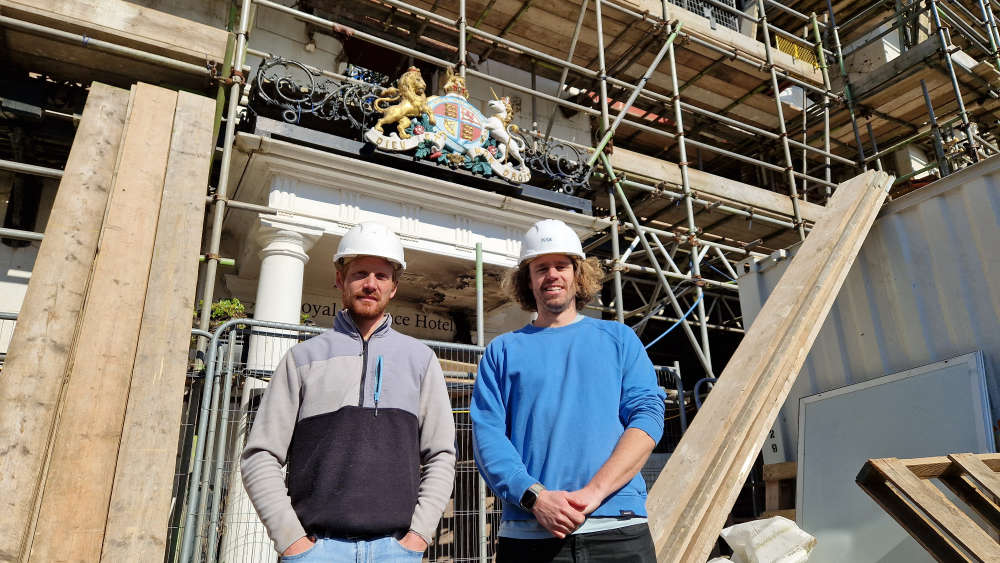
The Government has made the announcement today.
All 20,000 new homes will be built as entirely new settlements, not extensions to existing communities, and will aim to be self-sustaining, the Ministry of Housing, Communities, and Local Government have said.
No location for where the homes will be built have been agreed, but three councils – Exeter City Council, East Devon Council and Teignbridge District Council – are working together on plans for the development.
A spokesman for the MHCLG, confirmed that it would not be one single settlement but a range of smaller ‘garden villages’ that together form a networked city region, including a new free-standing settlement.
Minister of state for housing Kit Malthouse MP said: “This is fantastic news for Exeter and the surrounding area. We are making an urgent push to build more, better, faster, and it is good to see the authorities working together to plan 20,000 much-needed properties built in Devon.
“This project is the next latest step towards meeting our aim of building 300,000 homes a year by the mid-2020s, in the areas where people need them the most.”
He has confirmed that £750,000 of government funding will be used to back the project.
The Government money will be spent by councils to help to deliver the homes and infrastructure needed for both neighbouring communities and future residents. This includes specialist survey work and planning works with the money to fund dedicated project teams, master planning work, and studies to anticipate and offset the impact of housing growth.
An MHCLG spokesman added: “As part of the deal for the South West, the homes will be built in the region by 2040, providing properties for families and vibrant new communities in the picturesque Devon surroundings.
“These will be communities where people can live, work and raise families in a quality development.
“The new scheme in Greater Exeter area announced today will join the 28 existing garden communities the government is currently supporting, which are already delivering new homes today.”
They added that this was the start of the process and to get the schemes off the ground and towards the planning stage and that further funding may come forward to get deliver the new settlements, once permission had been granted.
Exeter City Council’s chief executive and growth director Karime Hassan said that he welcomed the announcement and that Exeter’s bold vision to create more than 12,000 new homes in the city over the next 20 years had been given a boost.
He said: “The Liveable Exeter vision to create more than 12,000 new homes for people in the next 20 years.
“This announcement will assist with the delivery of Liveable Exeter, which will bring much needed new homes to the city.”
The vision, unveiled by the City Council in February, highlighted the need to create new communities based on active travel including walking and cycling rather than the private car.
To be considered for government assistance, any proposal for a new garden community should make a significant contribution to closing the housing supply gap, the Government’s criteria states.
They say that they will prioritise proposals for new Garden Towns (more than 10,000 homes), but will consider proposals for Garden Villages (1,500-10,000 homes) which are particularly strong in other aspects.
Bids were invited last year from councils for ambitious, locally supported, proposals for new garden communities at scale. In return for tailored assistance to help design and deliver the vision for these places, we expect local areas to deliver significant housing and economic growth, the prospectus said.
The proposals had to demonstrate how the new garden community fits with the housing need for the housing market area, including expected future population growth and how the new garden community fits with wider strategies to support economic growth and increase productivity.
The new scheme in Greater Exeter announced today will join the 28 existing garden communities the government is currently supporting, which are already delivering new homes today.
Homes would be built in the area of the emerging Greater Exeter Strategic Plan, known as the GESP, which is the major strategic blueprint for the area around Exeter and will provide the overall spatial strategy and level of housing, and creation of jobs and employment land to be provided up to 2040
The draft Greater Exeter Strategic Plan, which is a ‘boundary blind’ distribution of housing across the areas, is set to be published in the summer of 2019 and will include the strategic site allocations and district figures, but around 57,000 new homes are set to be built.
These new garden communities would be part of the allocation of 57,000 homes targeted to be built by 2040.
It would supplement the plans for the Culm Garden Village, one of only 14 areas awarded Garden Village Status by the Government in January 2017.
Around 2,100 homes will be built by 2033, but the Garden Village eventually has the potential to deliver up to 5,000 sustainable new homes in a country park landscape, with jobs, community facilities and transport, all integrated with Cullompton itself.
 Work begins on project to rebuild fire-hit Exeter landmark
Work begins on project to rebuild fire-hit Exeter landmark
 Car crashes through wall near Exeter Cathedral
Car crashes through wall near Exeter Cathedral
 Plymouth community group scoops national award
Plymouth community group scoops national award
 Naming streets after famous people could be over in parts of Devon
Naming streets after famous people could be over in parts of Devon
 Devon man jailed for escaping lawful custody
Devon man jailed for escaping lawful custody
